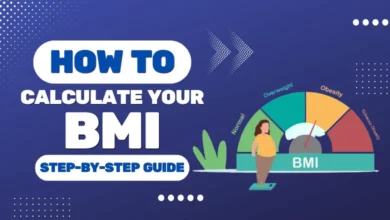How to Boost Circulation in Your Legs

If you suffer from poor circulation, then you will know only too well how this can affect your overall health and well-being.
Fortunately, you do not need to suffer in silence as there are several lifestyle changes and therapies that you can adopt to boost circulation in your legs and other parts of your body.
From red light therapy to compression garments, read on to discover six ways to boost circulation in your legs. Plus, discover what causes poor circulation and what are the most common symptoms.
What are the most common symptoms of poor circulation?
The most common signs of poor circulation are as follows:
- Hands or feet that feel cold or numb
- A blue tinge to your skin, especially if you are light-skinned
- Dry skin
- Brittle skin
- Hair loss and/or hair thinning
- Erectile dysfunction
Furthermore, if you have diabetes, it may take long any scrapes, sores, and wounds tend to heal slower.
What causes poor circulation?
Poor leg and foot circulation most commonly occurs due to diabetes, peripheral arterial disease, and Raynaud’s syndrome. That being said, even if you do not have any of the above conditions, you can still suffer from poor circulation.
Most commonly, people who smoke and those with unhealthy lifestyles are more likely to experience poor circulation. If you do not get your recommended weekly amount of physical activity, you are also more likely to have poor circulation.
How to boost circulation?
You can take several steps to boost circulation in your legs, depending on how severe your problem is.
Some of the most effective circulation-boosting techniques are as follows:
1. Give up smoking
If you are a smoker, you are much more likely to suffer from poor circulation than someone who doesn’t smoke. This is because smoking harms the walls of your arteries and causes a build-up of plaque. This plaque makes it more difficult for your blood to flow, which in turn leads to poor circulation.
If you are struggling to give up smoking, then speak to your doctor as there are many different therapies and medications that you can try.
2. Follow a healthy diet
As the saying goes, “You are what you eat”, so you need to ensure that you are fueling your body correctly. Focus on filling up on nutrient-dense foods such as fresh fruits and vegetables and high-protein meals.
Where possible, avoid eating too much processed meat and instead stick to a largely plant-based diet. Also, cut back on your salt intake as this can have a negative impact on circulation.
3. Invest in compression garments
Compression garments such as compression socks and sleeves are a must for anyone who suffers from poor circulation. Designed to reduce swelling and take the pressure off your legs, there are a wide range of compression garments to choose from.
If you regularly work out or play sports, compression garments can help to protect your muscles and prevent injuries. They can also help to relax your muscles and aid your recovery after physical activity.
Some compression garments can be worn around the clock, whereas others are designed to be worn after exercise or during physical activity. Make sure that you choose the right one for your needs and that you follow the instructions given.
4. Try red light therapy
Red light therapy is known for providing relief from poor circulation. A non-invasive and relatively cost-effective therapy, red light treatment is widely available in the United States.
This treatment for poor circulation involves using low-wavelength red light to provide more energy to your cells and enable them to work more efficiently.
Some of the most notable benefits of full body red light therapy are to boost collagen and fibroblast production, increase blood circulation to the tissues in your body and reduce inflammation in cells.
As mentioned earlier above, red light therapy is widely available, and you can find this effective treatment at gyms, spas, tanning salons, and dermatology offices. Furthermore, you can even invest in a red light therapy bed for your home, so you can use it whenever you want.
5. Focus on aerobic exercises
Aerobic exercises are a form of physical activity designed to pump oxygen around the body. Some of the most popular types of aerobic exercise are walking, running, swimming, and cycling.
When you engage in aerobic activity, you take in more oxygen, which gets moved to your muscles. This gets your blood pumping, makes your heart stronger, and lowers your blood pressure. Of course, it also helps to boost your circulation.
Ideally, if you want to get the most out of your fitness regime and aid circulation, you should aim to get at least 30 minutes of aerobic exercise 5 times a week. If you have not worked out for some time or you have poor physical fitness, then it can be a good idea to break this down into more manageable chunks of exercise.
6. Sit less, stand more
If you work at a desk or spend a lot of the day sitting down, then this can cause poor circulation in your legs, back, and feet. When you sit for long periods of time, this weakens the muscles in your legs and slows down the blood flow, which can, in time, lead to a blood clot.
While you may not be able to change your job, there are steps that you can take to lead a less sedentary lifestyle, such as standing at your desk rather than sitting and taking regular breaks to walk around the office.
If you tend to eat your lunch at your desk, make a conscious effort to get out of the office and walk around the shops or to a nearby park. Even if you only get up and walk around for 30 minutes during your day, this will still help boost your circulation and prevent future health problems.
Bottom line
If you suffer from poor circulation, you can’t just sit around waiting for it to improve. Whether your poor circulation results from an illness or health condition, or an unhealthy lifestyle, there are steps you can take to improve your circulation and overall health and wellbeing.






